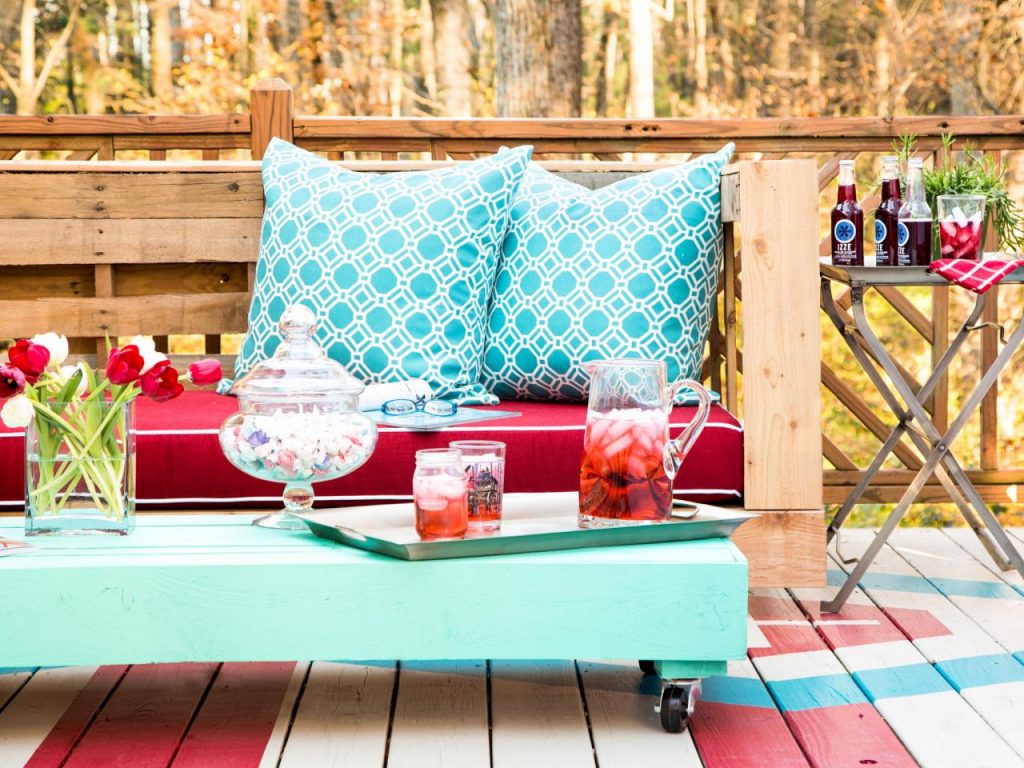Comment Soigner les Rudbeckia? Découvrez les variétés de Rudbeckia
Le rudbeckia ou coneflower est souvent confondu avec le tournesol. Si certains types sont, en fait, de couleur similaire, leur aspect général est très différent - les rudbeckias sont plus délicats. Les rudbeckias ont de nombreuses variétés qui se ressemblent, mais ont des couleurs différentes. On les trouve partout dans le monde. Vous vous demandez si c'est un bon choix pour votre jardin ? Découvrez-le en lisant cet article.
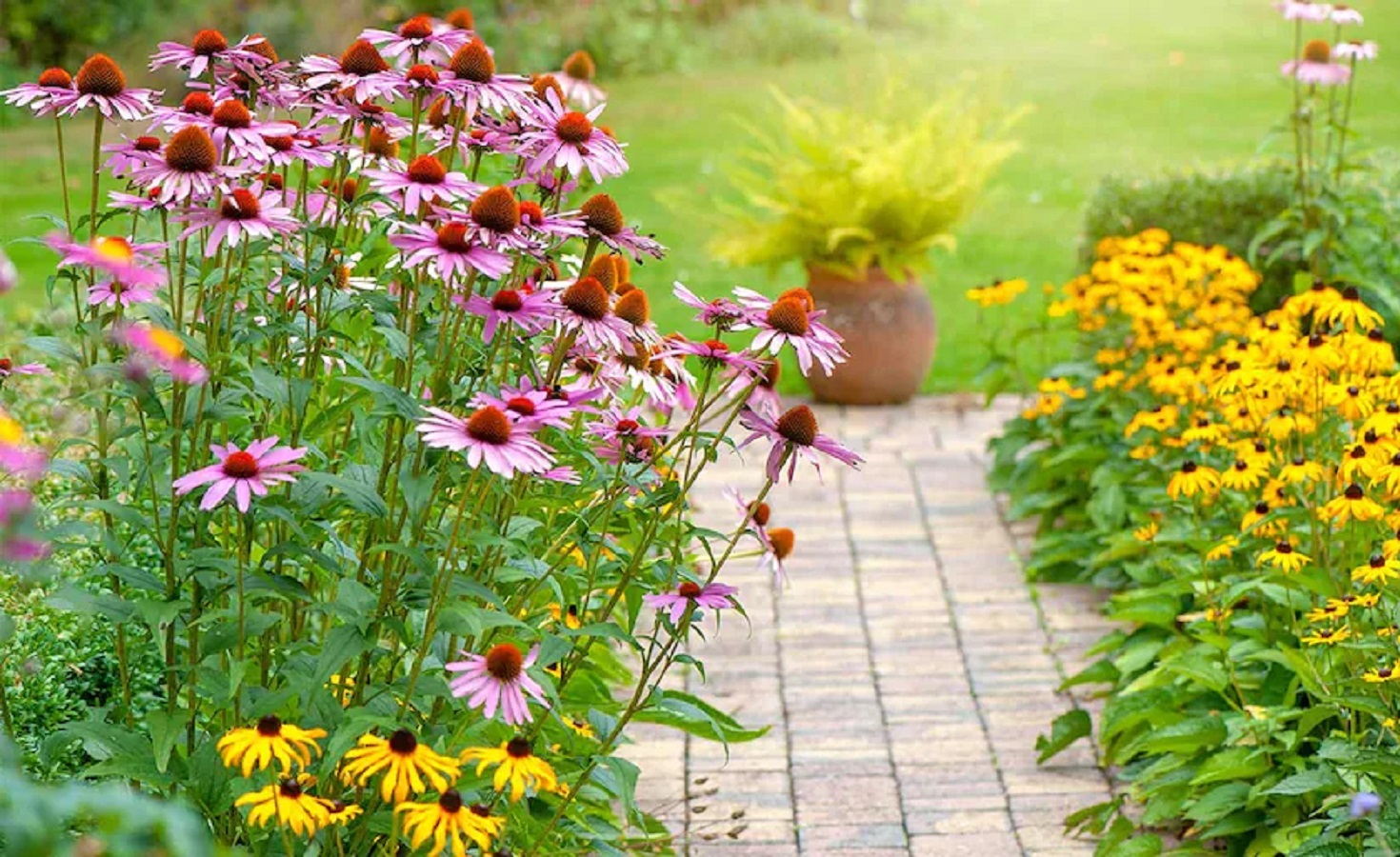
Rudbeckia - quel genre de plante est-ce ?
La Rudbeckia (Rudbeckia) est l’une des plantes les plus courantes dans les jardins privés. Elle est également appelée échinacée ou coneflower. Il s’agit d’une plante vivace originaire d’Amérique du Nord, bien qu’elle soit actuellement populaire sur tous les continents, notamment en Europe.
Rudbeckia pousse jusqu’à 70-100 cm de haut, indépendamment des conditions fournies. Pour cette raison, c’est une plante parfaite pour les parterres de fleurs situés autour de la maison. De plus, ses fleurs ne sont pas les seules à être remarquables, ses larges feuilles le sont tout autant. Dans certaines variétés, elles sont recouvertes de délicats poils.
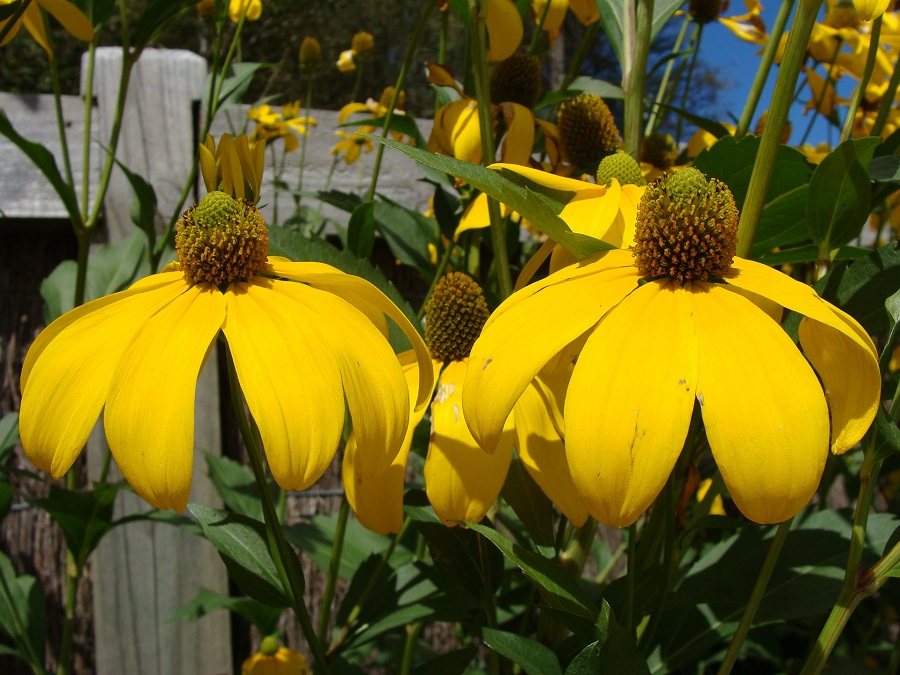
Rudbeckia - les variétés dignes d’intérêt
Les rudbeckias peuvent être divisés en 3 groupes de plantes populaires. Il s’agit de :
- rudbeckia fulgida, connue sous le nom de coneflower orange,
- rudbeckia laciniata, connue sous le nom de coneflower à feuilles coupées,
- rudbeckia hirta, appelée “black eyed Susan”.
Le coneflower orange (Rudbeckia fulgida) possède le plus de variétés naines. C’est un grand avantage dans les petits jardins. Dans ce cas, la hauteur de la plante ne dépasse pas 40 cm. La floraison de l’espèce dure longtemps - elle commence en juillet et se termine avec l’arrivée des premières gelées.
Le coneflower à feuilles coupées (Rudbeckia laciniata) est assez différent de la variété mentionnée ci-dessus. Le milieu est plus grand et plus bulbeux, mais il ne se détache pas des pétales. Dans la nature, cette plante pousse souvent dans les prairies et dans les endroits proches des réservoirs d’eau.
La Suzanne aux yeux noirs (Rudbeckia hirta) est considérée comme la plus belle de toutes les variétés. Elle développe d’énormes fleurs qui apparaissent en juin. Malheureusement, c’est une plante annuelle.
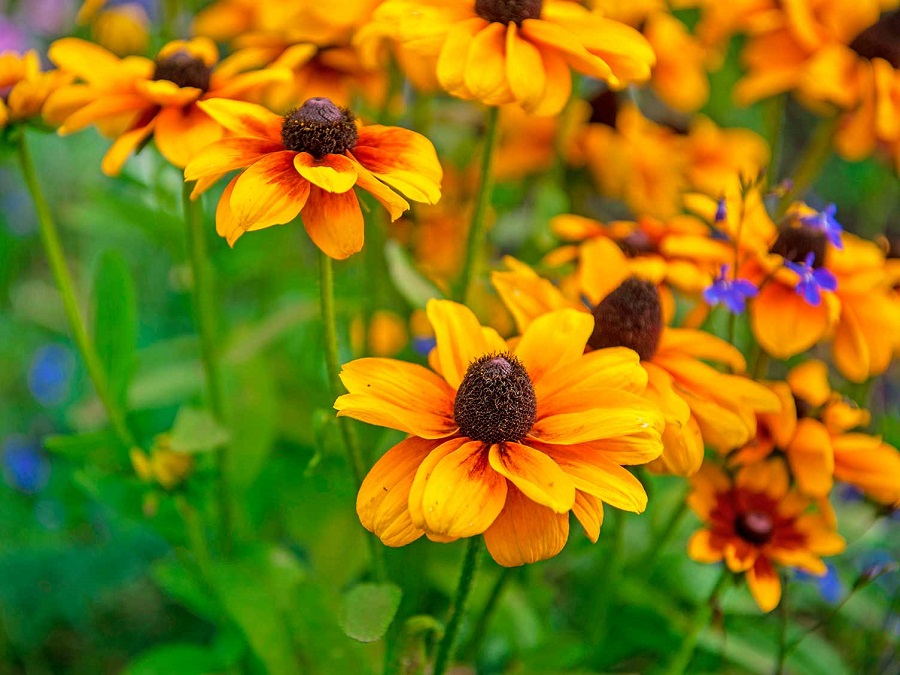
Quel est le meilleur sol pour les rudbeckias ?
Le rudbeckia est une plante assez exigeante en ce qui concerne le sol dans lequel elle pousse. Un sol fertile, meuble et perméable est le meilleur pour cette espèce. Le pH est également important, bien que les rudbeckias soient assez tolérants. Ils peuvent pousser dans des sols présentant les niveaux de pH suivants :
- neutre,
- légèrement alcalin,
- légèrement acide.
Quel est le meilleur emplacement pour les rudbeckias ?
Quelle que soit la variété de rudbeckia que vous choisissez, la plante a besoin des mêmes conditions dans chaque cas. La plante pousse mieux si elle est exposée au plein soleil. Un emplacement ensoleillé est la garantie d’une croissance rapide et d’une floraison riche.
Lorsque vous plantez des coneflowers en plein soleil, vous devez faire attention au niveau d’humidité du sol. Les fleurs peuvent avoir besoin d’un arrosage fréquent et intense.
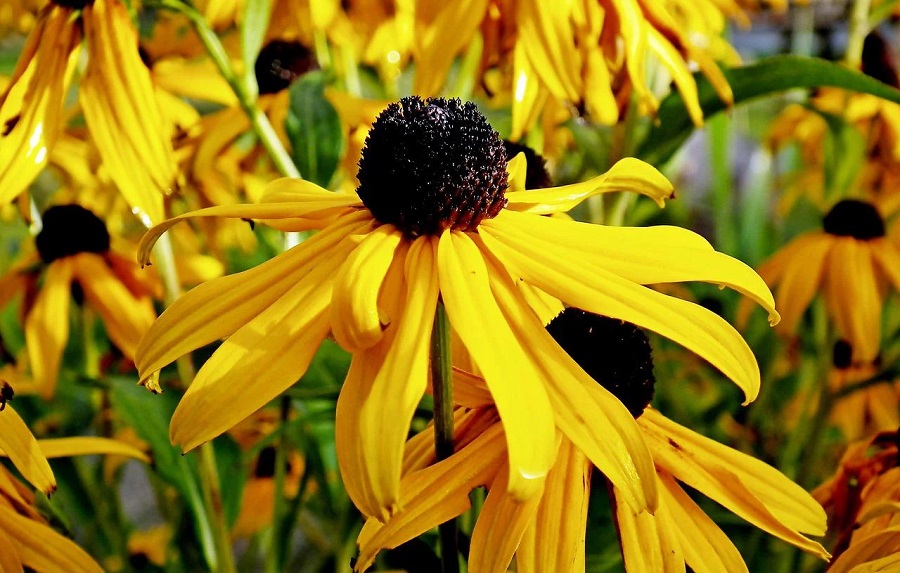
Rudbeckia - besoins de culture et soins de base
Les rudbeckias comme le black eyed Susan n’ont pas besoin de soins compliqués. Après avoir établi les conditions de base, il suffit de se souvenir de deux règles importantes :
- Arrosage généreux,
- fertilisation intense.
En ce qui concerne le premier point, ce n’est généralement pas un problème du tout, mais beaucoup de gens se demandent quel type d’engrais utiliser et quand le faire. Nous recommandons de l’utiliser au premier stade - lors de la plantation des coneflowers dans les parterres. Ensuite, l’engrais naturel est utilisé pendant toute la durée du printemps, ce qui renforce les coneflowers et les prépare à la saison de floraison.
Les jardiniers expérimentés ont certaines méthodes pour faire fleurir les plantes plus longtemps - vous pouvez aussi les utiliser ! Il suffit d’étêter les fleurs qui ont fini de fleurir - et de le faire régulièrement.

Les coneflowers se marient-ils bien avec d’autres plantes dans le jardin ?
Les coneflowers jaunes sont parfaits s’ils sont plantés avec leurs homologues violets - les échinacées. Ces plantes peuvent pousser ensemble en harmonie, car leurs exigences en matière d’emplacement et de sol sont les mêmes.
Certains jardiniers affirment que le rudbeckia ne tolère pas que d’autres espèces poussent à proximité Parce qu’il est assez exigeant, il peut leur faire concurrence pour les nutriments du sol et l’eau. Pour cette raison, il est recommandé de la séparer des autres fleurs.
Comment propager les coneflowers ?
Le rudbeckia n’est pas difficile en ce qui concerne sa propagation. La meilleure méthode consiste à diviser la masse racinaire, mais cela peut être fait avec des plantes âgées de quelques années au moins. On peut aussi essayer de récupérer des graines de rudbeckia, mais ce n’est pas toujours possible.
Rudbeckia - maladies et ravageurs
Le mildiou est la plus grande menace pour le rudbeckia. Il s’agit d’une maladie qui provoque une poudre blanche sur les feuilles. Vous pouvez la contrôler avec succès, surtout aux premiers stades du problème. Des pulvérisations de sulfate de cuivre sont nécessaires, dans ce cas.
En ce qui concerne les ravageurs, les pucerons sont la seule véritable menace pour les coneflowers. La plupart des variétés y sont cependant assez résistantes.
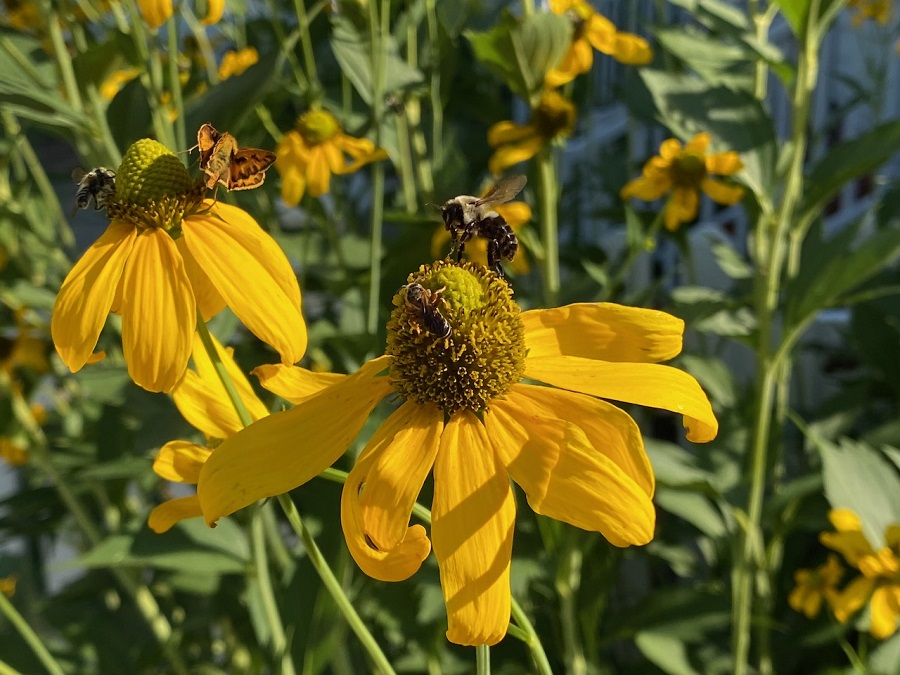
📍 À quoi ressemble un rudbeckia ?
Le rudbeckia est une plante de la famille des astéracées, qui est souvent comparée au tournesol. Son milieu est distinct, avec des pétales qui en sortent. Selon la variété, elle peut atteindre une hauteur de 40 à 100 cm.
📍 Quand planter les coneflowers ?
Les conifleurs sont plantés dans des pots ou des récipients spéciaux en février. Les plantules ont suffisamment de temps pour grandir et devenir fortes. Les plantes sont mises en terre en mai ou entre mai et juin, si les conditions sont favorables.
📍 Quand couper les rudbeckias ?
Les Rudbeckias doivent être coupés entièrement après leur saison de floraison. Coupez les plantes au-dessus du sol, afin qu'elles puissent repousser au printemps.
📍 Quand les coneflowers poussent-ils ?
Les chrysanthèmes semés en février poussent assez vite - après quelques semaines seulement. Les semis doivent être arrosés régulièrement et conservés dans un endroit chaud.
Articles de fond




